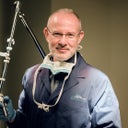Hi - I am considering laser resurfacing, and I have a couple of questions:
1) What kind of results can I get for the least amount of downtime?
2) What kind of results can I get if I opt for a laser treatment with the highest amount of downtime?
3) Please give me some examples of lasers that would fall in the ranges described in questions 1 & 2. Also if there are any middle-of-the-road options, please let me know about those as well.
Thanks, Diane.
Answers (16)
From board-certified doctors and trusted medical professionals
Dr. Ron Shelton, MD

Dr. Ron Shelton, MD
Dermatologic Surgeon, Board Certified in Dermatology
Answer
Dr. Ava T. Shamban, MD

Dr. Ava T. Shamban, MD
Dermatologic Surgeon, Board Certified in Dermatology
Answer
Dr. Gregory A. Wiener, MD, FACS

Dr. Gregory A. Wiener, MD, FACS
Board Certified Plastic Surgeon
Answer
Dr. Sonia Badreshia-Bansal, MD

Dr. Sonia Badreshia-Bansal, MD
Board Certified Dermatologist
Answer
Dr. Michael R. Macdonald, MD

Dr. Michael R. Macdonald, MD
Board Certified Facial Plastic Surgeon
Answer
Dr. Mark Berkowitz, MD

Dr. Mark Berkowitz, MD
Oculoplastic Surgeon, Board Certified in Ophthalmology
Answer
Dr. Kris M. Reddy, MD, FACS
Dr. Kris M. Reddy, MD, FACS
Board Certified Plastic Surgeon
Answer
Dr. Michael Tomcik, MD
Dr. Michael Tomcik, MD
Board Certified Dermatologist
Answer
Dr. Louis W. Apostolakis, MD
Dr. Louis W. Apostolakis, MD
Board Certified Facial Plastic Surgeon
Answer
More Laser Resurfacing Questions
See all Laser Resurfacing Q&AWE SEND PRETTY
EMAILS
What’s trending? Who’s turning heads? Which TikTok myths need busting? We’ve got you. No fluff, no gatekeeping—just real talk. Get our free, unfiltered newsletter.